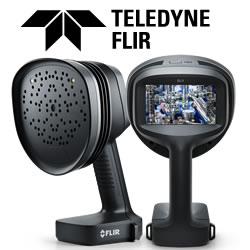Maximum performance for pouch filling machines
FAULHABER drive technology brings dynamics, precision and high availability in the tightest of spaces for packaging machines from Scaldopack.
Speed is of the essence for packaging machines: Products must be filled, reliably sealed and prepared for shipping in the shortest possible cycles. Moreover, if food is being packed, the hygiene requirements are also high. To keep the total cost of ownership low, maintenance should rarely be necessary and unplanned downtime avoided. The list of requirements is, thus, long and applies not only for the packaging machine itself but also for the components that are used, such as the drive technology. This article describes pouch filling machines that are used to pack both high viscosity foods and non-foods as well as products with particles.
The Belgian company Scaldopack develops, produces and services advanced spout inserting machines and pouch filling and sealing machines. Important here to the Belgians is that the manufactured packages be of very high quality, a low error rate, stable production speeds as well as a high availability of the machines. At the same time, flexibility is also very important to them. Their systems can easily be converted from one batch to the next in just a short time. Depending on the system and application, changeover times range from just a few hours to less than 30 minutes in some cases. Moreover, all systems were constructed so that maintenance is rarely necessary and can be performed quickly. This also serves to keep the total cost of ownership of the machines low.
Filling foods and non-foods
Scaldopack offers a number of systems for the filling of pouches: several pouch filling machines and spout inserting machines, which insert the pouch closures into pouches of various sizes (figure 1). The filling machines differ in terms of throughput, i.e., how many containers can be filled per minute and the type of the filled container: The Smartfiller Ecoline, for example, convinces with its flexibility. In addition to pouches, it can also fill bottles and containers. The Monofiller Multihead 4, on the other hand, can output 120 packages per minute thanks to the multi-head. Both foods as well as other high viscosity products or products with particles can be filled. Typical non-foods include gels, shampoos, lotions, soaps, conditioners, cleaning agents, plasticizers, auto oils or adhesives. Among the classic foods that can be filled with the system are baby foods, dips, hummus, sauces, peanut butter, honey, yoghurt, juices and alcoholic beverages. Manufacturers of sport gels, for example, also use systems from Scaldopack. These sport gels are used primarily by endurance athletes who need to perform at a high level and require a targeted, fast supply of energy and a reliable electrolyte balance.
High performance for packaging
But the packaging machines themselves need to perform at a high level as well. They often work around the clock, seven days per week. Breaks for maintenance, whether planned or unplanned, quickly become costly and, thus, need to be avoided. Anyone purchasing such a system also always has an eye on the TCO. In addition to the acquisition costs, there are then also the maintenance costs, production quality and the avoidance of variables that can contribute to production errors. What applies for the system applies for the installed components as well. High performance is likewise demanded of the drive technology that is used (figure 3 a-c).
Direct linear drives with built-in Hall sensors
For smooth and efficient operation of the machines, Scaldopack uses BLDC motors from FAULHABER (figure 4). The direct linear drives with built-in Hall sensors enable a position accuracy of up to 0.1 mm with an acceleration of up to 4 g. This allows the pouches to be moved both quickly as well a precisely to the proper filling position. There, they are filled and sealed with the correct quantity of sport gel and then stacked in displays for shipment or sale. Because floorspace in production facilities is often expensive and, thus, limited, the used systems also need to occupy as little space as possible. In the compact machine, it is advantageous for the drive unit to have minimal installation space requirements. With a volume of 22 x 22 x 74 mm, it still achieves a peak force of 27 N and offers exceptional long-term reliability: Unlike conventional pneumatic components, it can operate continuously for nearly three years without maintenance. This fits in very well with the wishes of the equipment manufacturers to offer systems with low maintenance requirements.
In addition to the reliability of the drives, system integration and operability of the machines are also decisive factors. The highly dynamic MC 3603 motion controllers that are used (figure 5) perform the position control. Using standardized communication interfaces such as RS232, EtherCAT or CAN, set-points for control can easily be set or the drive can be integrated in the automation system. In the actual application, the CiA402 compatibility of the used motion controller enables simple integration in the EtherCAT control system of the filling system. The motion controller significantly simplifies not only the integration but also the necessary tests. This allows drive systems and machines to be optimally matched to one another to achieve peak performance. The application makes clear what a decisive role dynamic, precise, compact, low-maintenance and easy-to-integrate drive technology plays in the automated packaging industry.
Featured Product

